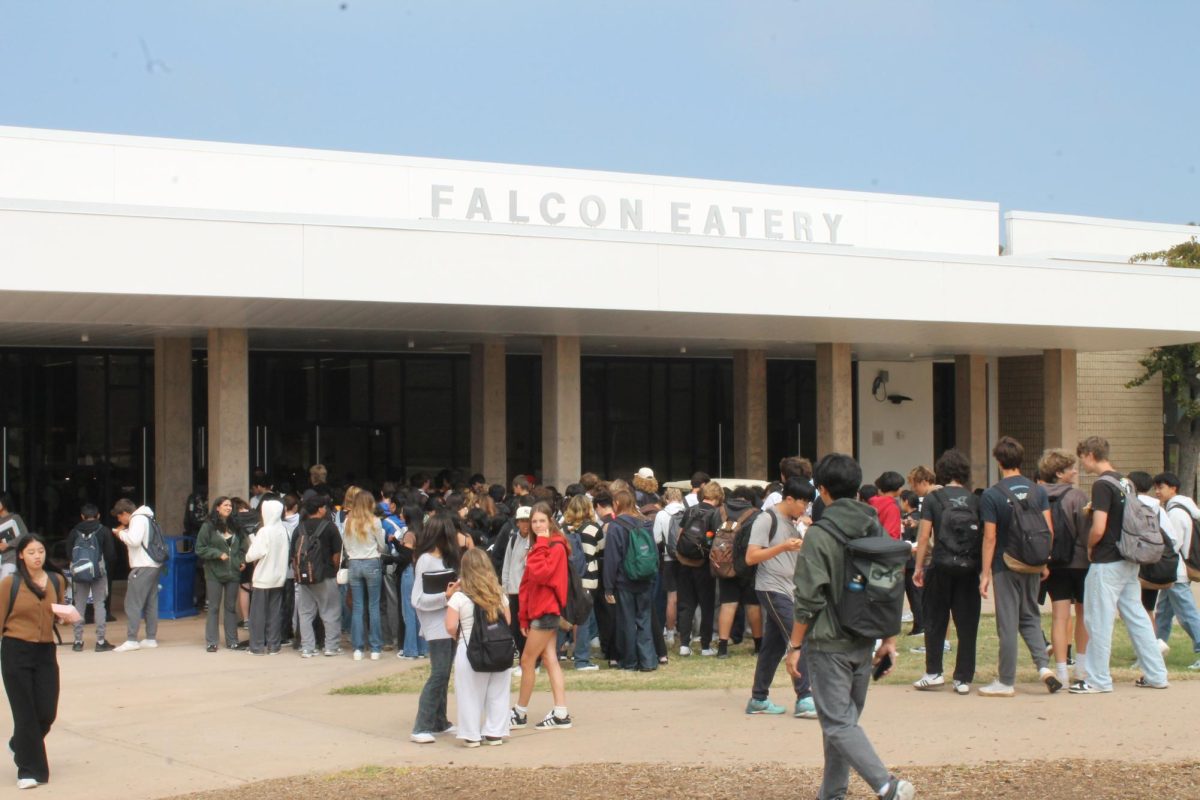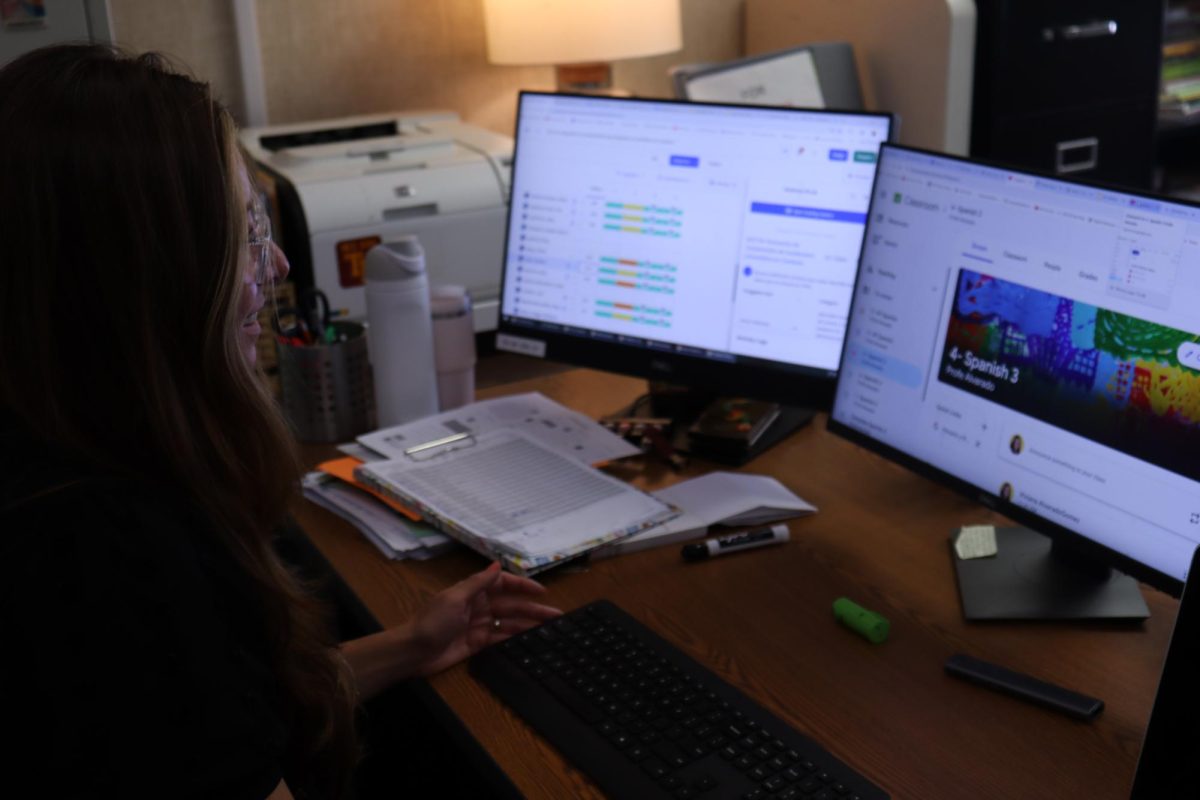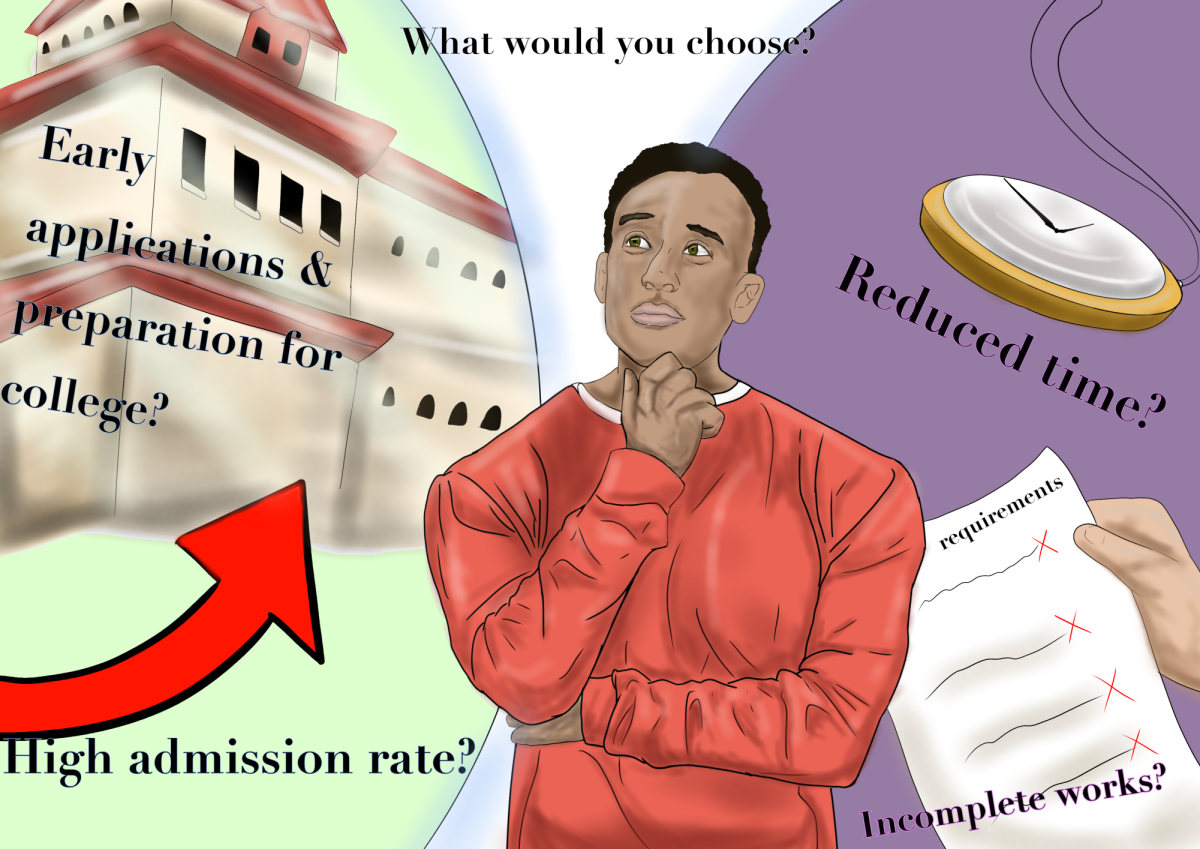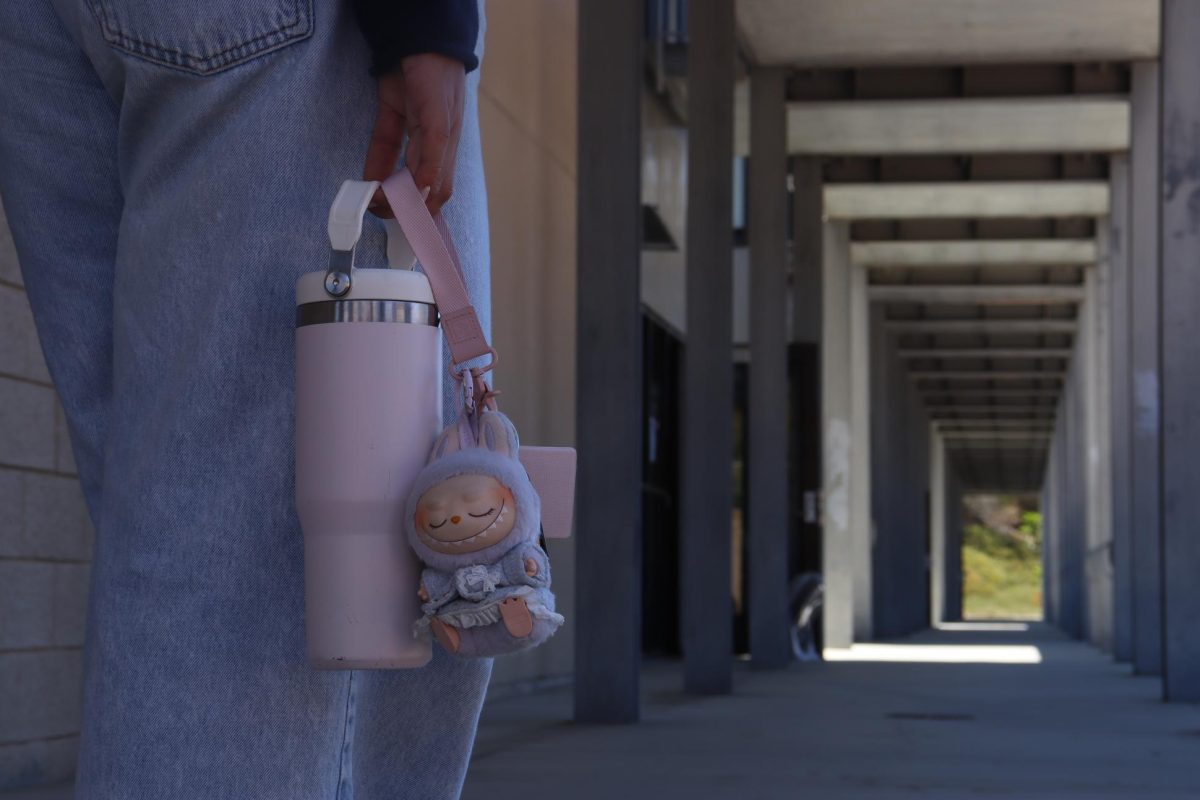Pro – by Isabel Ji
In recent years, changes such as later start times, and the option of online school, have been enforced to improve the education system and quality of life for students. However, there are currently no federal or state policies regarding the length of lunch times, other than a suggestion of at least 20 minutes from the Center of Disease Control — nowhere near enough time for a full meal. Lunch breaks are crucial for students to socialize and take a break from the tiring academic school day. A longer lunch will not only give additional time for socialization, but also discourages cutting the lunch line and reckless driving trying to speed out of the student parking lot.
With a shorter lunch period, those who have class far from the cafeteria spend the majority of the lunch period waiting in the Falcon Eatery line. Countless people cut other students, giving initiative to cut the line themselves. On the other hand, those waiting for the line to diminish later into the lunch period leaves them with minimal food options, discouraging students to wait in the line.
Undiscarded trash across campus is another issue brought to light by a shorter lunch period. Students, in a rush to get to class, often do not throw away their trash, leaving the campus dirty and also putting greater stress on school staff to clean up after students. More time for lunch also allows students to consume less food in school buildings. As the school currently deals with an ant problem, a main reason is due to food remnants in classrooms. Thus, allowing students to have a more fulfilling meal period reduces the chance of students eating in class.
Studies from the Journal of Academy of Nutrition and Dietetics show that longer lunch periods generally lead to the consumption of more nutritious food. With shorter lunch periods, students often lean towards unhealthy and convenient snacks like chips and energy drinks. On the other hand, upperclassmen who go off campus during lunch are more likely to get fast food like McDonalds. What’s more worrying, shorter lunch periods lead students to take more reckless actions — irresponsible driving, biking and jaywalking.
Additionally, longer lunch periods benefit clubs on campus through less strict time-constraints on meetings. Club presidents have more time to prepare activities, as well as increase engagement with club members as they aren’t as concerned about time constraints during the lunch period. Not only do longer lunches benefit clubs, but it also allows teachers to prepare for their upcoming classes. Thus, both student involvement and overall engagement of both teachers and students increase.
Some may argue that longer lunch periods cause students to become less focused on academics. In truth, taking longer lunch breaks helps the mind reset and focus on things other than academics — socializing with friends, participating in a club, etc. as stated by the King County Green School Program, which is crucial to their general well-being. High school students are often overwhelmed with their course load, leading to burnout from back-to-back classes and an overall decrease in involvement within classes.
As a result, longer lunch periods have many benefits to both the student and the campus — including encouraging students to wait in the lunch line rather than cut it, motivating them to discard their trash and eat at lunch rather than in classrooms. Concerning physicality during shorter lunch periods, students tend to lean towards more unhealthy or convenient options rather than nutritious foods needed for growing adolescence. Moreover, safety-hazards such as reckless driving, biking and jaywalking are introduced when students rush back to campus during short lunch periods. Longer lunches also give both students, club representatives and teachers a break from the tiring school day, increasing engagement while teaching and learning at school while also decreasing chances of academic burnout.
Con – by Sneha Lele
While students at the school are blinded by the attractiveness of a longer lunch to socialize with friends and enjoy a meal, they fail to see the hidden impact a longer lunch period could have on their schedules, social life and general well-being. It is time to view the issue from an entirely student-supportive outlook; suffer the consequences, or reap the benefits.
What students do not acknowledge is that a longer lunch period either means shortening class periods, or extending the entire school day to accommodate for the extended lunch time. To theoretically lengthen the lunch period without altering the school schedule, even if it were for only 20 minutes, would mean that class periods would shorten to accommodate for the added time. According to Juni Learning, reduced instructional time lessens the quality of the learning experience and teacher-student interactions. Also, if students have less class time, it would shorten the time students are allowed to finish classwork, adding to the already heavy burden of homework that is assigned.
Why sacrifice class time for a lengthed lunch time that does not add to their intellectual capabilities? Lunch should be focused on giving an adequate and timely “brain break” to everyone with an emphasis on getting kids home at the most convenient hour.
While it seems reasonable to want longer lunches to spend more time with friends, it is important to consider an alternate outlook: what if classes are not shortened, and instead, the school day drags on for longer to accommodate a lengthened lunch?
Not only is it absurd to have a longer school day, but it directly pushes all afterschool activities, such as sports,clubs and jobs, later in the day. Students will complete their assignments, extracurriculars, and for seniors, college applications, in shorter periods of time, limiting free time and periods for relaxation, which can take a large toll on student physical health.
However, students who largely rely on lunch for connecting with friends argue that even a small amount of extra time for socialization is beneficial to students. While socialization is important, it should not be addressed when discussing lunch times.
School isn’t the optimal time for socialization, rather any time afterschool is where real connections are made and students are not pressured by the weight of the next period. After school, kids have the benefit to socialize and have fun with peers without a time limit, but by elongating lunch periods, the socialization in the evenings gets cut. An extended hour of lunch for socialization could never top genuine time spent with friends after school.
Students who get lunch at the Falcon Eatery often are not able to make it on time to class, due to long lines. However, the lunch period is already 40 minutes long, which deflects the problem towards the sheer lack of lunch lines available considering the large student population at the school. This problem is not rooted in the length of the lunch period, but the lack of accessible resources our school offers for food.
While considering if an elongated lunch is worthwhile, consider what a student’s plans are after school and how the rest of their schedule, and the quality of their learning, can be affected. The schedule may sit well for some, but put a heavy burden on others, and a student’s class rigor, extracurricular activities, and breadth of social life should also be taken into account. How we spend our time matters, and those already minimal after-school hours are the most precious. Let’s work to keep it that way, and treat lunch exactly as it is. Short, sweet, and an indication of a nearly-completed school day.












